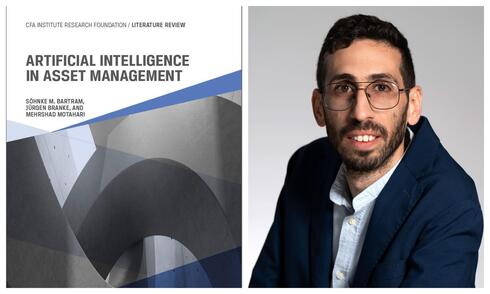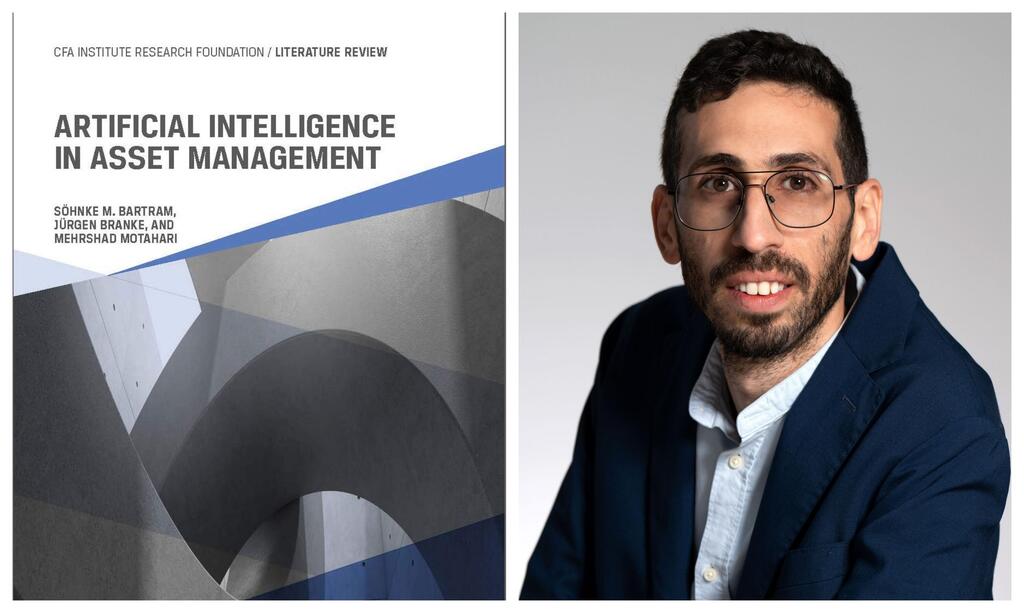
BiblioTechCTech’s Book Review: Using AI to understand the stock market
BiblioTech
CTech’s Book Review: Using AI to understand the stock market
Mor Hazan, Co-Founder and VP Product at Bridgewise, has joined CTech to share a review of "Artificial Intelligence in Asset Management" by Söhnke M. Bartram.
Mor Hazan is the Co-Founder and VP Product at fintech startup Bridgewise. He has joined CTech to share a review of "Artificial Intelligence in Asset Management" by Söhnke M. Bartram.
Title: “Artificial Intelligence in Asset Management"
Author: Söhnke M. Bartram
Format: Tablet
Where: Commute
Summary:
"Artificial Intelligence in Asset Management" explores the transformative impact of artificial intelligence (AI) on the asset management industry. The book delves into how AI technologies are reshaping various aspects of asset management, including portfolio management, trading, and risk management. It highlights the effectiveness of AI in processing vast amounts of data, generating investment strategies, and optimizing portfolio performance.
The author presents case studies and empirical evidence to demonstrate how AI enhances decision-making and operational efficiency, suggesting that AI is not just a trend but a significant advancement in the finance sector. Overall, the book provides a comprehensive overview of AI's potential to revolutionize asset management practices.
Important themes:
One of the book's central themes is the distinction between traditional asset management approaches and those enhanced by AI. Bartram argues that AI's ability to analyze big data allows asset managers to develop more robust investment strategies that outperform traditional methods. The book discusses three key areas where AI applications have emerged: portfolio management, trading, and risk assessment.
In portfolio management, AI tools help in asset allocation by utilizing quantitative and qualitative data to derive insights that inform investment decisions. This capability allows for a more sophisticated understanding of market dynamics and improved forecasting of returns.
The trading section emphasizes the rise of algorithmic trading, where AI algorithms execute trades based on real-time market analysis, optimizing execution strategies to minimize costs. This has created a paradigm shift in how trades are executed, significantly increasing speed and efficiency.
Finally, the book addresses portfolio risk management, illustrating how AI can identify and mitigate risks through advanced predictive analytics. By analyzing historical data patterns, AI can provide insights into potential future risks, allowing asset managers to take preemptive actions.
What I’ve learned:
Reading "Artificial Intelligence in Asset Management" has given me a deeper understanding of how AI is not merely a tool but a fundamental change agent in asset management. One of the most enlightening aspects was learning about the practical applications of AI in decision-making processes. For instance, the book illustrates how machine learning models can identify patterns in market behavior that would be imperceptible to human analysts, leading to better investment outcomes.
Moreover, the concept of algorithmic trading has shifted my perspective on the speed at which financial markets operate today. I was particularly struck by the idea that AI can continuously learn and adapt to new data, enhancing its predictive capabilities over time. This adaptability is crucial in today's fast-paced trading environment, where timing can significantly affect profitability.
Lastly, the emphasis on risk management through AI was eye-opening. The ability to leverage AI for real-time risk assessment provides a competitive edge, as firms can respond swiftly to market changes. Overall, this book has equipped me with valuable insights into the future of asset management, highlighting the necessity for professionals in the field to embrace AI technologies to remain competitive.
Critiques:
While Bartram's book is comprehensive and well-researched, it could benefit from a more critical examination of the limitations of AI in asset management. For instance, the reliance on AI could introduce new forms of risk, such as systemic risks from algorithmic trading or biases in machine learning models that affect decision-making. Additionally, a discussion on the ethical implications of using AI in finance, including issues of transparency and accountability, would enhance the depth of the analysis.
Who should read this book:
This book is essential reading for finance professionals, asset managers, and investors looking to understand the implications of AI in their field. It offers practical insights into how AI technologies can enhance investment strategies and operational efficiencies. Additionally, students and academics in finance and technology will find it a valuable resource for exploring the intersection of AI and asset management. By understanding these concepts, readers will be better positioned to navigate the evolving landscape of finance in the age of AI.















